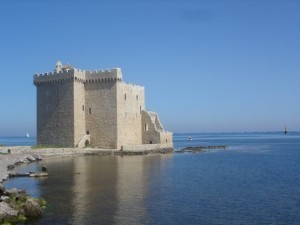Lisa Niver's Blog: We Said Go Travel, page 434
January 2, 2014
St. Thomas, USA: Below sea level
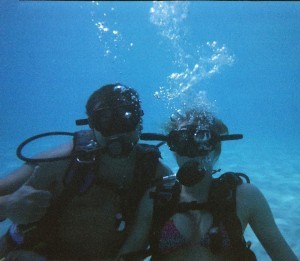 Below sea level: A whole new world
Below sea level: A whole new world
St. Thomas is truly beautiful. The island is home to luscious green mountaintops, amazing sandy beaches and the clearest blue water that I had ever seen. The morning we arrived in Charlotte Amalie via cruise ship was jaw dropping. I had never seen such a gorgeous landscape. The bay was peppered with small sailboats and luxurious yachts from around the world. We didn’t have long to bask in the picturesque scene of the Caribbean. We were off on an adventure; we were going SCUBA diving. We hurriedly made our way through the port area to our open-air taxi taking us to Coki Beach.
Our surfer dude instructor went over our under water signals and equipment, as well as what we could see once we started our dive. It was hard to focus on our safety briefing as we sat along a wall on the beach. We could hear the waves crashing behind us; see iguanas soaking up the morning sun on rocks. After our short lesson, our group of four was then led down to the beach. We were fitted for our masks and assigned oxygen tanks. My knees were buckling under the weight of the tank as I walked down the beach towards the surf. Our next step proved to be an even harder challenge. Once in waist deep water, we had to put on our fins. With the water moving you constantly, we were bobbling around like buoys.
Getting the breathing underwater portion down was the most important step and I was struggling. It felt extremely forced, what I imagine an astronaut must feel like preparing for his first trip into space. Once you are underwater, it is a completely different experience. So many things stand out to me about the dive. The once heavy oxygen tank makes you completely weightless as you glide along. You use different breathing techniques to keep yourself from floating too far up or too far down, ensuring that you don’t bump into the sensitive coral. You sound like Darth Vader through your regulator as you try to steady your breathing. Your eyes dart around, soaking it all in, trying to focus on every little detail. You feel like you can almost see for miles, the water is so crisp.
Tropical fish swim by, almost not even noticing that you are among them. The different varieties are endless with their colors, sizes, and temperaments. The first we saw was a school of large Parrotfish. Their vivid colors of deep blue, purple and green were striped and dotted on their scales in no general pattern. Each fish was different from the one previous. Their beauty surrounded us. As our instructor took out some doggie biscuits, schools of fish came from nowhere. Some would come right up you, looking at their reflection in your mask. Others would hurriedly take some of the snack and dart off in the opposite direction. The rock and coral formations randomly placed along the sandy sea floor were equally as lovely. Eels and fish were popping out of little coves and caves, hiding behind shells, surprising us each time.
My favorite part of the dive was being immersed completely in an ecosystem entirely different for my own. As you go through your dive the swimming and breathing with help of a tank almost becomes second nature, as if you belong in this other world. It was absolutely mesmerizing. The feeling of being part of something so fragile and stunning was breathtaking. Our dive was over too quickly and we all equally agreed it was the most amazing thing we had ever done. I wanted so badly to go back out, to experience it all again for just a couple more minutes.
About the Author: Amanda Causer is an inspiring writer who has caught the travel bug. Her preferred method of travel is cruising but would love to see the world any way possible. Follow her blog to see where she is traveling next!
Thank you for reading and commenting. Please enter our next Travel Writing competition and tell your story.
The post St. Thomas, USA: Below sea level appeared first on We Said Go Travel.
Cannes: Finding My Rosé-Coloured Sunglasses
The city of Cannes has been called a jewel of the French Riviera, a pseudonym that refers to its glittering azure waters and its garb of celebrity status as home to the Cannes International Film Festival and impressive hillside villas. It is the setting of such tales of wealth, sin, and splendour as Scott F. Fitzgerald’s Tender is the Night, and is a neighbouring town to the workplace of the celebrated Spanish painter, Pablo Picasso.
My experience of Cannes assumed much of this mythical character over the year that I spent there, training at a small school for ballet dancers near Mougins. Certainly, the school residence seemed no less than a paradise on earth. Sprawled over the grounds of a former hotel resort, it was dotted with orange-roofed buildings made of washed-out adobe, overgrown stone fountains, and curtains of purple bougainvillea cascading down walls.
But soon after I arrived at the gates of paradise, I realized that it was not suited to a high-strung teenager from Toronto. Living in the south of France was akin to being on an endless vacation, offering as much stimulation as a holiday spent tanning on the beach. It was a remote countryside place with little inspiration for an aspiring dancer. Days passed without an internet connection. The general work-ethic was low among teachers and dancers. The language barrier was thick, and I often felt alienated at mealtimes when Italian and Japanese ruled the passing of water. Boredom quickly set-in. On my way to the studio each morning I grimaced at the large, fenced-in hog at the side of the road. I wondered if he regretted this place too.
In March, the school was scheduled to perform in Menton, a small town further along the coast. Cannes…Nice…Eze-sur-Mer…Menton. It was all the same to me—more sun and more beaches. I sleepily mounted the bus for a two-hour ride. When I opened my eyes we were coasting along deep blue water. There were palm trees creating intervals in the road, the tops shaking haughtily against a cloudless sky. But the scene was all too-familiar and I was irritated by its tranquil beauty. Where was the push-and-pull of ideas? The contradictions of society that fuel creative vision? I turned and went back to sleep. Over lunch, the dancers lazed on the grass terrace outside the mansion where we would perform. Some smoked cigarettes while others pulled out leftover chocolate bars from breakfast. To me, this laid-back attitude was equal to impropriety. I got up and ventured away from the company.
At the beach there were children playing with their parents in the sand. Before, the waves had looked mildly frothy from the window of the bus, but up-close the water at Menton was violent and grey. They were not the waters of Cannes. The waves hurled themselves together, crushing rocks into little pieces that the children collected in their hands.
I stripped down to my underwear and waded into the water, feeling the angles of rocks press up into my feet. I held onto a large boulder with my right arm and sat down with my legs outstretched, pointing towards what I began to imagine as the site of antiquity—the boot of Italy and the flecks of Greek islands beyond. I sat there and waited for the violent water to bury my legs, to feel the rush of it around my body, and numbness after. I closed my eyes to sense the thrill of letting go of the boulder to be washed away, and to perhaps return to this shore many years later in smaller fragments of myself. I could hear the shrieks of children but they seemed distant now.
As I walked away from the beach, I was rejuvenated. The waves had given me a feeling of smallness and I could suddenly appreciate their inevitable course. I had judged and belittled this place, but what I was truly dissatisfied with was my inability to control my new life and the differences that came with adapting to it. The water’s strong, relentless movement made me realize that there was no point in fighting anymore. What I needed was to accept.
There was something to learn from these carefree, rosé-lovers—the friendly couple who ran a rotisserie shack on the country road, the families gathered under olive trees on Sundays, the elderly groundskeeper who spoke lovingly of sipping wine while watching the birds. These people taught me that life is not only about achievements and goals, but that it is also valuable to slow down, enjoy, and soak in our surroundings. This was not the risk I had expected to take when I moved to Cannes, but it demanded just as much from me. I was learning the art of slow-living on the Cote d’Azur.
About the Author: Jo Minhinnett currently lives in Rochester, New York and is working on a Master’s degree in Photographic Preservation. She hopes to return to the south of France one day.
Thank you for reading and commenting. Please enter our next Travel Writing competition and tell your story.
The post Cannes: Finding My Rosé-Coloured Sunglasses appeared first on We Said Go Travel.
The 6 Best Places for 2014: Can You Guess?
Richard Bangs is a judge in our We Said Go Travel Writing contest which opens TODAY! We hope you will participate and share your story! Write your favorite spot for 2014 in the comments below!
So, once again we combed the planet, turned over the stones, took the pulses, danced the boards, and basked in the wonders. Over the years we’ve plumbed over 180 countries, but we do not choose a “best” because “it is a great place,” and certainly not because it has fantastic hotels or restaurants. We choose a place because it inspires us.
The destinations in this year’s list were chosen because they swept us away. Yes, there are the amenities, the views, the spas, but at the start of the day we look for four key qualities: adventure, romance, delight, and something we might call glamour.
What makes us quest to the reaches of the world? Glamour may not be the right word, but not because it is too overreaching; it is only insufficient. In short, we have selected the places herein simply because they open our eyes and make us wonder.
The hints are below. Can you guess these places?
6)
5)
4)
3)
2)
1)
The post The 6 Best Places for 2014: Can You Guess? appeared first on We Said Go Travel.
Manarola Bay, Italy: Stormy Weather
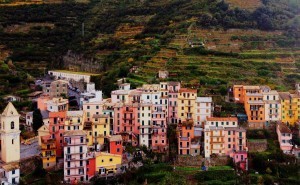 The air flavored my lips with the slightest hint of the sea as I watched the violence below. It had been building, I noticed, each of the three times I looked at Manarola Bay throughout the day. But the chaotic fervor was exponentially greater tonight. Gone was the calm swimming area of tourism photos and in its place a frothy, churning cove of confusion. Lighting scattered along the cliff face illuminated things just enough to see breaking whitecaps tumble-down and join this fight, the battle between sea and cliff. Folks living in the Cinque Terre (the Five Lands or Five Villages) have witnessed this same struggle yearly – for centuries.
The air flavored my lips with the slightest hint of the sea as I watched the violence below. It had been building, I noticed, each of the three times I looked at Manarola Bay throughout the day. But the chaotic fervor was exponentially greater tonight. Gone was the calm swimming area of tourism photos and in its place a frothy, churning cove of confusion. Lighting scattered along the cliff face illuminated things just enough to see breaking whitecaps tumble-down and join this fight, the battle between sea and cliff. Folks living in the Cinque Terre (the Five Lands or Five Villages) have witnessed this same struggle yearly – for centuries.
Being here near the end of November, the middle of rainy season, brings less tourists, especially on days like this. I suppose that’s why, just after dusk, I’m sitting alone on the farthest out point in town, a concrete square nearly 25 feet above the sea. That’s why I’m sitting alone soaking up sea spray riding the wind after each misty explosion as natural stone and manmade barrier absorb Mother Nature’s force. And that’s why I’m sitting alone in below 40 degree, 25 MPH windy weather. But, enamored by the sounds and sights surrounding me, I can’t leave.
As a Midwestern raised landlubber, whose vacations seemed to always take me to the mountains and deserts of Colorado, Arizona, and Utah, I first visited the sea in my early 30’s. That first trip to the water, and the few since, were during nice spring and summer weather, so this night was my first real experience seeing big water come alive during a storm. The next day the surge continued, and the day after that; the waves crashed and the bay boiled like it had that first night. It was mesmerizing.
Rain and wind kept me in or near my hostel in Manarola for most of the week I stayed in the Cinque Terre, and the closed trails through the National Park kept my journeys to the four other villages at the mercy of a train schedule. That said, I made my way back to the same concrete vista many times over the next 36 hours. Then this storm, lingering as the last tempest of Cyclone Cleopatra (that had devastated Sardinia with flooding a few days earlier), slowly started to fade and finally died out.
In the end I saw everything I came to see, save for some a few views from high on the ridge, and I’m happy it rained like it was coming from a million huge shower heads. It kept me tied down to Manarola and I got to know all the back alleys, all the paths to the hilltops above, and all the little shops and restaurants along Strada Provincielle delle Cinque Terre, Manarola’s only street.
I spent time in each village in the Cinque Terre but as it turns out, Manarola is my favorite. Neither smallest nor largest Manarola is less commercial than Monterosso and – seemingly – less touristy than Vernazza. It is separated from the rail line by a walking tunnel, like Riamaggiore, but, to me it is more interesting, and from the terraced grapevine fields nearby the views of Manarola are spectacular, even from as far away as Corniglia.
Sometime I’ll visit this area again. Probably during better weather, probably in the summer months, but I can scarcely believe the summer beauty will trump the sense of awe I had that first night looking at the bay.
About the Author: Jacob Curtiss is a traveler and travel writer. He has recently finished a nearly year long backpacking trip through Europe. You can see more of Jacob’s work on his blog or on the Unmapped Travels Facebook page.
Thank you for reading and commenting. Please enter our next Travel Writing competition and tell your story.
The post Manarola Bay, Italy: Stormy Weather appeared first on We Said Go Travel.
January 1, 2014
Corcovado: Costa Rica’s Final Frontier
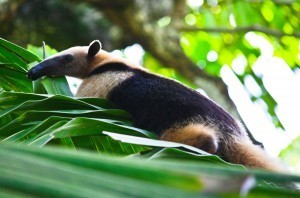 We had hiked for seven hours, miles from any passable road, the trail, the only way in or out. A morning spent drifting between deserted beaches and smothering jungle canopy. One leaving us exposed to the merciless tropical sun and the other to stifling humidity. Though caked in sand and sweat, it was impossible to not be overcome by the sheer remoteness of our location. A lost world, a last pocket of resistance holding out against the ever encroaching hand of man, Costa Rica’s Corcovado National Park is the very essence of the vanishing wilderness. Corcovado National Park is an opportunity to see the world at its most primal. It was this isolation and the utter immersion in a world that does not know mankind’s interference that lead my wife and me to Corcovado.
We had hiked for seven hours, miles from any passable road, the trail, the only way in or out. A morning spent drifting between deserted beaches and smothering jungle canopy. One leaving us exposed to the merciless tropical sun and the other to stifling humidity. Though caked in sand and sweat, it was impossible to not be overcome by the sheer remoteness of our location. A lost world, a last pocket of resistance holding out against the ever encroaching hand of man, Costa Rica’s Corcovado National Park is the very essence of the vanishing wilderness. Corcovado National Park is an opportunity to see the world at its most primal. It was this isolation and the utter immersion in a world that does not know mankind’s interference that lead my wife and me to Corcovado.
Located on Costa Rica’s secluded Osa Peninsula in the southwest of the country, the park is the jewel in Costa Rica’s impressive national park system. A fingerling of natural wonder jutting out into the Pacific, it is the most preserved lowland tropical rainforest on the Pacific coast of the Americas. National Geographic once labelled Corcovado as the “most bio-diverse place on Earth.” The park does not disappoint. The forest is bursting with life and one cannot help avoid seeing the wide array of species that call the park home. One could spend a lifetime wandering through the canopy and never discover all the park’s secrets. We had a mere five days. Still enough time to realize the sheer capacity of nature to flourish when left unchecked.
Time spent in Corcovado provides encounters with wildlife one may have never thought possible. Life surrounds you and each turn on the trail brings new anticipation of what may lie ahead. The sound of every rustling branch, every broken twig, every crushed leaf, has the potential to herald a new creature. For us, that potential was realized a few hours into our hike. There are several hiking trails that lead towards the ranger station at La Sirena. We took the La Leona hike, a nine hour trek along the coast. As we entered a section of trail that curved into the forest, we heard a great commotion in the underbrush. Out of the foliage came a tamandua, a tree dwelling anteater. It crossed the path right in front of us and, paying us no heed, climbed a tree in search of food and a nap. For 30 minutes, we sat and watched the tamandua scramble around the tree, eventually finding a resting spot on a palm frawn. Our proximity to the animal was remarkable and since it had had so few experiences with people it did not view us a threat. It was not the last time viewing wildlife this closely. Corcovado’s remarkable level of preservation has made it a safe haven for several highly endangered species; none more so than the Baird’s Tapir.
This docile giant’s only refuge on the continent is Corcovado. On the trails leading from La Sirena, the tapirs are your constant companions. At daybreak it is common for tapirs to cross the river which bisects the park to graze on the opposing bank. To witness these unique creatures, one must set out before first light. The rainforest is still at its blackest through much of the hike, blanketing us in the stillness of the jungle night. Once we reached the river, we waited until the sound rustling undergrowth broke the silence. With the rising sun as their backdrop two male tapirs emerged from the forest. Lumbering across the sand, they entered the river and swam across. It may have only taken three minutes, but knowing that this event and these magnificent creatures cannot be witnessed anywhere else on Earth, leaves you with a complete sense of awe.
And even when not out in the open, the forest provides constant reminders of its inhabitants. Freshly made footprints traverse the wet sand. The shrill call of howler monkeys echoes through the trees and the songs of birds ubiquitous. The nights at La Sirena are the most sublime in this sense, as you sit on the station’s porch listening to the chorus of chirps, croaks, and calls emanating from the blackness. One realizes that inquisitive eyes stare down from the trees; eyes that may see the traveler but remain unseen to you. It shows the wondrous adaptably of life and serves as a reminder that you are but a visitor in this place and not its master.
About the Author: My name is Bill Hoversen. I am a history teacher from Chicago, Illinois. I began travelling intensively after spending a summer teaching in Vietnam. I currently live and work in Budapest, Hungary.
Thank you for reading and commenting. Please enter our next Travel Writing competition and tell your story.
The post Corcovado: Costa Rica’s Final Frontier appeared first on We Said Go Travel.
USA: Towpath Trail Adventures
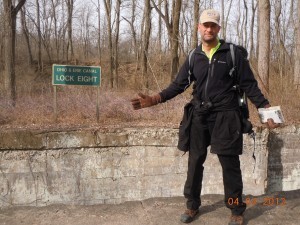 On Easter Sunday, 2013, my husband and I began our 110ish-mile trek from Cleveland, Ohio, south to New Philadelphia on the old Ohio-Erie Canal towpath trail. I was writing a book about an 1840′s mule driver, and wanted to replicate his journey. Somewhat. I’m fifty years old. I hadn’t backpacked for twenty-five years. And I was recovering from two herniated disks.
On Easter Sunday, 2013, my husband and I began our 110ish-mile trek from Cleveland, Ohio, south to New Philadelphia on the old Ohio-Erie Canal towpath trail. I was writing a book about an 1840′s mule driver, and wanted to replicate his journey. Somewhat. I’m fifty years old. I hadn’t backpacked for twenty-five years. And I was recovering from two herniated disks.
We mitigated the grueling daytime schedule by overnighting at bed and breakfasts along the way. If my back acted up, Northern Ohio’s spring weather was too awful, or we injured ourselves, we would call for a taxi and drive to our next night’s lodging. Amazingly, the weather cooperated. No nasty downpours or freak snowstorms. In fact, our faces, the only part of us showing through our cold weather gear, sunburned.
But other obstacles arose. Our mental challenge became crystal clear on the first day, hiking through Cleveland, to Jaite Lock in Northfield, then off the trail and straight uphill to the Shady Oaks Farm Bed & Breakfast. After fifteen miles of walking, my body screamed, “Enough!” But we had ten miles to go. Twenty-five miles hadn’t sounded so bad in the abstract. Eleven hours after we started, we stumbled upon our hostess entertaining her family for Easter dinner. When we finally escaped to our room, and those boots came off, my feet sang the “Hallelujah Chorus”.
My feet were a blistered mess. I didn’t see how I could continue. Soaking in a warm bath was the first step toward feeling human again.
And the restorative power of sleep was remarkable. We slept like the dead. The next morning I applied more moleskin, wrapped my feet in duct tape, dusted them with foot powder, and resolved to continue. After a gourmet breakfast, we proceeded to our next stop, The O’Neil House in Akron. Along the way my husband developed hip pain, forcing him to walk like the proverbial tortoise. We hiked more than twenty miles, then left the trail to climb another few miles into the city. By the time we rang the doorbell, we were both fried.
But the night worked its magic. My feet were toughening up, and Steve took pressure off his hip by unbuckling his waist strap. It’s the way he used to backpack in the military. That third night, swaying at the check-in desk at the Hampton Inn in Massillon, I was giddy with anticipation. Unwrapping my feet, bathing, dinner in bed. These memories are as intense as if they happened yesterday. Day Four we pushed on to Bolivar and the Enchanted Pines Retreat. The owners were supposed to pick us up, since they lived eight miles off-trail. A hot tub awaited us. Suh-weet!
During our daily lunch of peanut butter and honey sandwiches, I called Earl Menges with our ETA. No answer. I called again during our mid-afternoon GORP break. No response. By the time we reached our rendezvous point, I was freaking. Bolivar, Ohio, is in the middle of nowhere. The thought of walking further right then, when we’d anticipated being whisked away to our hot tub, struck me as inhumane. In frustration, we dropped our packs and waited.
Fifteen minutes later, Earl located us. We were so thankful we didn’t care when he told us his hot tub was broken. He upgraded us to a room with a Jacuzzi, and once again we reveled in pealing off our layers of toil, and washing away the pain. Earl had a menu from the town pub in our room and they delivered! That pub sandwich and milkshake ranked as a five-star meal.
Day Five called for walking from Bolivar to New Philadelphia. A huge challenge, because the restored trail peters out after Zoar. We continued along the Tuscarawas River until we reached the town of Canal Dover, then bushwhacked through farmer’s fields, woodland, and circumvented squatter’s camps. By the time we hit New Philadelphia’s city streets, we were lost.
Meanwhile, our friends were waiting to retrieve us for dinner and reunite us with our car. We tweaked our itinerary, deciding to drive ourselves to the official end of the proposed trail the next day. After falling asleep in front of a fire in our restored Amish cottage in Stone Creek, we set out to find Blake’s Mill Lock in New Philadelphia.
We’d done it. Over the past five days I’d marveled at the beauty and serenity of woodland, riverbank, and canal basin; traipsed through quiet country and belching city; and experienced tedium, pain, and the power of mind games. I’d kept going when I was sure my reserves had run dry, and reveled in the simplest pleasures. And, most importantly, I’d done it all with my husband and best friend. Creating memories we’ll never forget.
A triumphant adventure to be sure.
About the Author: Kim Van Sickler is a writer and Girl Scout volunteer living in Willoughby Hills, Ohio. When she isn’t writing, reading, or running the scouting program in western Lake County, she’s mulling over adventures to lure her husband and any combination of their five children.
Thank you for reading and commenting. Please enter our next Travel Writing competition and tell your story.
The post USA: Towpath Trail Adventures appeared first on We Said Go Travel.
Prevention Magazine: “Go For It” with Lisa Niver Rajna
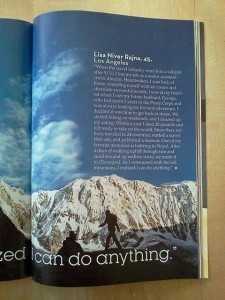
Prevention Magazine January 2014
Thank you to Prevention Magazine for including me in their “Go For It” section for January 2014!
“Staying active is my passport to adventure.”
Lisa Niver Rajna, 45
Teacher, travel writer
When the travel industry went into a tailspin after 9/11, I lost my job as a senior assistant cruise director. Heartbroken over the fact that my days of traveling had come to an end, I wound up back at home, consoling myself with ice cream and chocolate-covered almonds. I was at my heaviest when I met my future husband, George Rajna. George had spent two years in the Peace Corps and was always looking for his next adventure. I quickly realized that it was time for me to get back in shape—for me, for him, and for all of the amazing trips we could take together. We started hiking on the weekends, and I cleaned up my eating habits. Within a year I’d shed 28 pounds, and felt ready to take on the world. Since then, George and I have traveled to 24 countries, started our own website, We Said Go Travel, and published a memoir of our first sabbatical, Traveling in Sin. One of my favorite memories is trekking in Nepal. After four days of walking uphill through rain, sunshine, and up endless stairs, I realized we made it to Ghorepani. As I communed with the tall mountains, I realized I can do anything.
Thank you to everyone involved for including me in the “Go For It” Section! I really appreciate it! I hope you buy a copy of the magazine today! Personally I cannot wait to hold it in my hands and read it out loud! Did you see me in First for Women Magazine? Check it out here! I loved the photo shoot!
WATCH: Traveling In Sin Book Trailer
Traveling in Sin is a HOT NEW Release on Amazon! from Lisa Niver Rajna
The post Prevention Magazine: “Go For It” with Lisa Niver Rajna appeared first on We Said Go Travel.
Brazilian Sunrise
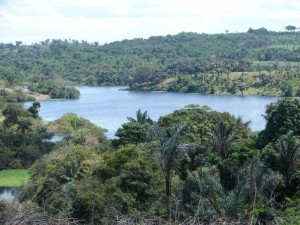 I stepped off my first international flight at 4:39, along with nineteen other visitors from our small town. We sleepily boarded transpiration that would take us from the city to the jungle. Most of the travelers slept peacefully on the trolley. I sat in the front bench inspecting the strange landscape out the window. It was blank and shapeless. Less than an hour later we pulled up in front of “The Amazonian.” A small three layered ship that floated next to its dock in still waters. Once the guests were settled, the river craft made a silent departure. Its glided smoothly towards the uninhabited rainforest.
I stepped off my first international flight at 4:39, along with nineteen other visitors from our small town. We sleepily boarded transpiration that would take us from the city to the jungle. Most of the travelers slept peacefully on the trolley. I sat in the front bench inspecting the strange landscape out the window. It was blank and shapeless. Less than an hour later we pulled up in front of “The Amazonian.” A small three layered ship that floated next to its dock in still waters. Once the guests were settled, the river craft made a silent departure. Its glided smoothly towards the uninhabited rainforest.
The tents of darkness blanketed the earth, the terrains, the rivers, the small water vessel and the far traveled sojourners. Stars peeked out from their remote shelters of the universe. The celestial balls of fire reflected a glow to the waters. It was like cities twinkling under the cover of darkness. The boat rocked back and forth as waves hit the sides.
On board, we stood on the viewer’s deck to catch a glimpse of the new sights. I stood next to railing towards the front of the “The Amazonian.” Families stood in little clusters across the deck. Our eyes longed to acquire slights we had only heard rumors about, the Brazilian rainforest when the sun appeared. We waited and held our breath as the canopy of sky prepared to spread out before us.
I saw the initial break of dawn came across the sky in smooth tones of ivory. It was as if the sun kissed the earth for the very first time. The largest candle in the atmosphere flicked in and out until it burst into flames. Suddenly, coral and the crystal colored flares streaked toward the center of the expanse of the heavens. The clouds began to dance in the sky like the spin of a skirt durning a waltz.
The sun rose over the mossy peaks. The hills were wet with rain. The greens were so vibrant it seemed to be a dream. The mountains climbed into the heavens and their heads touched the clouds. The small footpaths snaked throughout the uneven heights of elevation. The fingers of the sun bounced and rolled off the tops of of the Kapok trees, the highest trees in the wilderness suburbs. Sunlight poured onto the surrounding neighbors the Acai berry trees and the Brazilian nut trees.
In the next layer of the untamed forest, were melodies of sight and sound. The feathered friends flapped their wings all the while singing of the new morning. The noise caused other animals to leave their tree huts and stumble about for a more quiet piece of paradise. Monkeys swung their tails in a circle and taunted the onlookers. I waved back at the fuzzy creatures. The nocturnal critters ran from the light to find protection in a dark corner on the forest floor. Lime green frogs hopped and bounced from tree to tree to find a more efficient observation post.
The roots of the trees gripped their claws into the clay. They created trails from the base of trees to the edge of the slopes. They dangled their appendages into the streams of water. Weather-beaten rocks lined the bank and on a occasion beady eyes of a scaly onlooker. The ripples of the blue water garment sparkled and wiggled across it’s river bed. The collar of the water popped as it hit the shore. Rainstorms and at times a swiftly moving current had created coves and tiny peninsulas by washing away the soil. Long gray noses appeared above the freshwater river. The three playful Amazon river dolphins hurdled themselves through the air. Their tinted pink skin could be seen as they gave an acrobatic show.
And then in one moment the rains came. The smell of mint filled the fresh air. The beating rhythm of the rain made gentle thumps against the sides of the river cruiser. The droplets of water caused ripples in the sapphire stream, small at first but bigger and larger as time past. As I watched the sights, smells and sounds of the Amazon, made my world come alive. It called to my soul to discover and I longed to answer. I determined to explore the world and find new treasures that continued to deepen my since of awe.
About the Author: Ella travels the world teaching English and doing humanitarian work. She loves to learn new languages and interact with new cultures.
Thank you for reading and commenting. Please enter our next Travel Writing competition and tell your story.
The post Brazilian Sunrise appeared first on We Said Go Travel.
December 31, 2013
Igbele, Nigeria: Outreach for a Reawakening
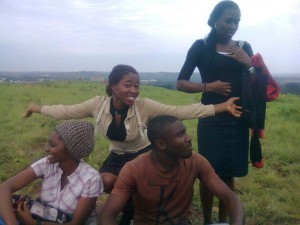 In my just concluded undergraduate life, every year I had the privilege to visit a local community not to far from my university campus. We usually went to different communities as part of my Christian fellowship’s evangelical outreach, back then in school. Each year, we spent about four days with the villagers in a different community: sleeping on wrappers in uncompleted buildings, going to the restroom in bushes and taking our baths in improvised bathrooms constructed with palm fronds.
In my just concluded undergraduate life, every year I had the privilege to visit a local community not to far from my university campus. We usually went to different communities as part of my Christian fellowship’s evangelical outreach, back then in school. Each year, we spent about four days with the villagers in a different community: sleeping on wrappers in uncompleted buildings, going to the restroom in bushes and taking our baths in improvised bathrooms constructed with palm fronds.
As part of our activities, we engage the villagers in enlightening bible studies, Christian expositions, deliverance sessions, and to crown it all, we cater to their medical needs. I was fortunate to always be in the medical team because of my inclination in the medical field. In all those years visiting various communities like Umuagama, Igbele and Umuogem, no other place struck me as awe inspiring like Igbele. The passionate impact was not due to the strong convictions of the word exposition or the tenacity and ruggedness of my Christian brethren during the outreach. However, it was because of the experience I would soon encounter in the final two days of our outreach.
♫ Call: Igbele bu nke Jisus
Response: Alleluia! Alleluia!! Alleluia!!! ♫
During our stay in Igbele, we frequently sang the song highlighted above to reiterate our mission in that community. The song, of Igbo language extract (Nsukka dialect), means that Igbele must be won for Christ, and that we rejoice because it was never our battle but the Lord’s, in gaining victory. We had unwavering faith in what we professed and did not care to think otherwise because of the power, forgiveness and restoration we had individually encountered. Unknown to me, nonetheless, my life was about to receive a reawakening of a past evil.
In the first day of the two days medical screening, counselling and drug dispensing, I was astounded to meet, for the first time in my life, an adolescent patient with generalized epilepsy. He was courageously brought by his daring mother to consult our medical team. Seeing the handsome lad made tears well-up at the sides of my eyes, as if to cry. It was glaringly evident that the condition was dire and had affected his physical and mental orientation, and postural disposition. Just for three hours with my team, the lad had two critical convulsion attacks. I could only imagine how often he, and his family, had to go through this daily nightmare for the last seven years of his epilepsy severity. He was 14 years at the time of our examination. I was absolutely shattered. The pieces of my broken heart were melting away on the floor of despair. Three thoughts slammed my mind. “What if it was me in this unfortunate condition,” was my first thought. I just could not run away from the consciousness of the long-suffering of a fellow.
The second was the renewed awareness of the large severed heart of a virtuous mother with unconditional love for her children. That small voice within me was screaming: “I love you mum! I love you so much!” I could not control myself. I was emotional.
The third thought was as thus: “Poverty, you are a cruel master.” His family could not afford drugs for the management of his condition. Antiepileptic drugs were expensive and our team did not have any around. All I could suggest in my professional advice was for the mother to feed him more of fatty meals, vegetables and fruits, as these help in minimally managing epilepsy and improving general neurological conditions. As I helplessly watched them leave, I realized they needed more assistance than our evangelical Christian mission could offer. Reports I received later that evening provided the last straw that broke the camel’s back. I was informed that epilepsy was endemic in Igbele and its neighbouring communities. These were generally poor communities and hence, could not afford appropriate healthcare.
I learnt several eye-opening lessons from my outreach in Igbele. My past evil of ingratitude had no need for existence anymore. From that day, I had infinite reasons to be thankful for everything pleasing I received from our Creator. Who am I not to be grateful? Same goes for everyone healthy in our universe. Many would kill to have our privileges. I also learnt that we should show more love and care for other humans, especially those in need. This would come to fruition when we grow a heart for channelling our finance and other non-monetary resources to bettering the lives of those in need. I learnt that love heals broken wounds, when it is aright. I mean, simply picture the lad’s mother. I conclude by saying we should all be reawakened to the perspective of a world in need of us.
About the Author: My name is Okoli Izuchukwu Chiedozie. I am a fresh pharmacy graduate of the University of Nigeria, Nsukka (UNN) with a passion for academic research, reading and writing. My facebook username is “Pharm.izuchucoco”
Thank you for reading and commenting. Please enter our next Travel Writing competition and tell your story.
The post Igbele, Nigeria: Outreach for a Reawakening appeared first on We Said Go Travel.
La Sicilia-Sicily
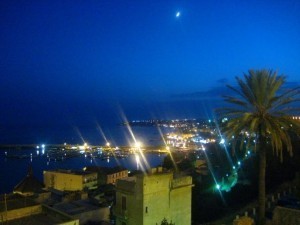 “Santa Maria, piena di grazia, il Signore è con te. Tu sei benedetta fra le donnee benedetto è il frutto del tuo seno, Gesú. Santa Maria, Madre di Dio, prega per noi peccatori, adesso e nell’ora della nostra morte. Amen.”
“Santa Maria, piena di grazia, il Signore è con te. Tu sei benedetta fra le donnee benedetto è il frutto del tuo seno, Gesú. Santa Maria, Madre di Dio, prega per noi peccatori, adesso e nell’ora della nostra morte. Amen.”
Nights here were always like this. Lazy, hot and languid. She looked out onto a steep labyrinth of streets and dangled her arms out the window. Little yellow puddles of light emerged from the wide brimmed hats of the metal posts. When the wind was in from Africa the shades wheeled about creaking in uneasy high pitched tones, not unlike the women making their daily trip to confession, shriving, as they caught sight of the long legged American singora turning over carciofole in the piazza, extending her wrists, inspecting their undersides, her movements plumed with scandal as she plucked an artichoke leaf and fingered its fruit.
“Dai, dov’è la luna questa sera?” l’americana leaned forward and slid her torso further out into the night. A half moon hung over the harbour, enveloped in an orange haze. The hillside here was dressed in square slabs of staggered heights; among the house rooftops lines of clothes could be seen, lacing through the streets like the dark triangle banners of a North End saint day, and then there were the occasional shadows of exotic verdure. She often thought the palms in this place carried on like the locals- swaying lightly in the breeze, nodding at the passer-bys, every-so-often careening in violent gusts of motion, dramatically bowing to a lovely lady en robe noire.
She could hear the Italians out and about, chirping staccato syllables down into the medina, searching for delle belle donne, singing and cheering each other on. It was hard to believe that she had been here for almost three months now, living within these walls of catholocized cement, sitting in windows that looked out to Tunisia. In the evenings she watched the boats leaving the harbour and imagined herself wrapped up in a sail, stowed away on a Mediterranean voyage, emerging from the hull two days later into a land of Arabian nights and alchemistes.
The fishermen were not at their boats now, the older group didn’t leave to join the fleet until late in the night, seemingly waiting until the air was unbearably heavy with language to escape off into the still and placid night of the sea. When they returned it would be early in the morning and they’d hurry to unload their catch before the heat of the day set in.
That afternoon she’d left the house in such a state, the old medina at the end of siesta, late, past five when the sun was not so hot but the streets were still empty. Had climbed up to the church that hovered over the city, sat in a pew and silently waited.
One after another they entered, all on their own with no priest to lead them, no man in the church save the statue of Jesus, lightly cracked skin and those same outstretched hands. They weren’t looking to him: creased faces and heavy hands running over the beads, murmuring “Santa Maria, piena di grazia, il Signore è con te. Tu sei benedetta fra le donne.”
About the Author: Meredith is an applied linguist currently living in London. She writes modern short fiction in her spare time and spends every spare penny on plane tickets for travel. She spent one month in Sicily staring out at the sea and watching the fishermen from her bedroom window in Sciacca.
Thank you for reading and commenting. Please enter our next Travel Writing competition and tell your story.
The post La Sicilia-Sicily appeared first on We Said Go Travel.
We Said Go Travel
We Said Go Travel is a global community of over sixteen hundred writers with articles from every continent.
Stories are shared with photos and video from a perspective of the transformative power of travel. We Said Go Travel has hosted live and online events as well as travel writing contests around the world. ...more
- Lisa Niver's profile
- 57 followers


